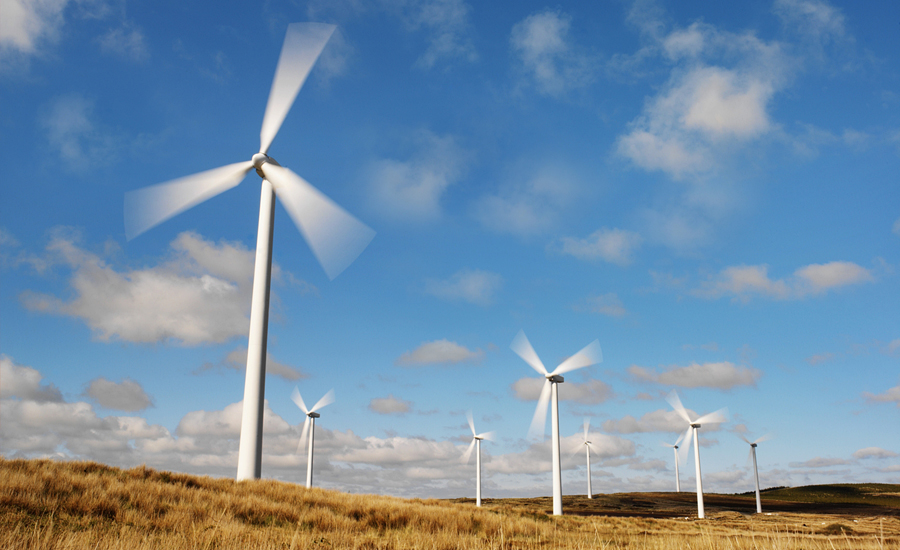How to Build an Energy Efficient Engine Room in Just 5 Steps

The machinery room is the heart of any industrial refrigeration system. Building one that’s energy efficient can make a big difference in energy savings. But, how much of a difference is largely dependent on what takes place outside of the room, where influences throughout the facility can play a significant role in energy usage?
By paying attention to details, maintaining regular communication between the machinery room and the production floor and using common sense, facilities can improve energy efficiency by as much as 50%, just by following these five steps.
Step 1: Close the doors
Closing the exit and dock doors to prevent outside air infiltration from occurring seems like a fairly obvious step. But, it’s remarkable how many facilities fail to monitor this basic activity.
It’s not uncommon to see facilities that have many dock doors, with several of them open in the heat of the summer, which translates into a greater load on the system. That forces compressors to work harder to meet the load, and contributes to a serious energy waste.
Employees sometimes leave doors open because the doors don’t function quickly enough and it’s easier to leave a door open when moving product in and out. Whether it’s an employee overriding controls or a general lax approach to door policies, this issue should be addressed to ensure efficient system operation.
In these situations, a facility might consider installing faster-acting doors. In other cases, while closing the doors would be more effective, backing up trucks so that fewer doors remain open would also help solve the problem.
Bottom line—the prevention of air infiltration is critical in reducing the load and can provide an energy savings of up to 50%.
Step 2: Monitor compressors
Monitoring the sequencing and control of compressors is another method to increase energy efficiency in the machinery room. The goal should be to have compressors operating loaded at 100% and only one machine at a reduced “variable” load. A popular philosophy of leaving compressors on “hot stand-by” to meet an unanticipated lineup can also drain energy. It’s similar to leaving a car running in case a sudden departure is needed. It just doesn’t make sense from an energy standpoint. To prevent this, effective communication between the machinery room and the production floor is critical.
The functional description of the refrigeration system can also be programmed to keep all compressors fully loaded with one variable machine. Once the variable compressor drops below 20%, it should be shut down to save energy. Even if the facility is not properly wired or programmed to allow this recommended compressor sequencing, the cost of doing this will be quickly recouped in energy savings.
Step 3: Accommodate outside temperatures
Many facilities aren’t aware of the energy benefit that can be gained from floating head pressure control utilizing a wet bulb approach. Plants often fail to make changes in system head pressure to accommodate cooler outside temperatures or drier outside air.
As the wet bulb temperature fluctuates, the system head pressure can be reduced, which in turn will lower the energy used at the equipment room. Many older systems run at a constant high side head pressure regardless of changes in the outside temperature. By using the wet bulb approach to control head pressure, the correlation between system operating pressure and wet bulb can be held to a narrow pressure differential. This will significantly reduce the energy consumption for the machinery room compressors when the outside temperature drops or the outside air is dryer than normal.
Changes in the system and operating schedules in response to weather conditions also apply to defrosting strategy. Facilities in colder climates don’t require the same level of defrosting on evaporator coils in winter, when there is less moisture in the air to infiltrate the facility and affect the coils. Yet many plants keep the same defrosting schedule year-round, running identical defrost frequencies in January and July. Defrosting several times a day in cold weather does not make sense when only two defrost periods a day are needed to allow efficient evaporator performance.
A visual inspection of the evaporator coils will reveal when defrosting is necessary and provide energy savings in the machinery room. Logging these observations and conditions will make it easier to predict and adjust defrost schemes.
Step 4: Slow down the fans
Another way to reduce energy consumption in the machinery room is by slowing down fans to reduce air flow through the evaporators and condensers.
Fans draw considerable amperage each time they turn on from a dead-start. By keeping the motor running and varying the speed based on the air required, energy savings can be earned.
Variable frequency and/or 2-speed fan controls on the evaporators and condensers will result in significant reductions in amperage requirements and provide for a balanced system. This also reduces heat input to the refrigerated room that would otherwise need to be removed by the compressors. These control methods will result in smoother overall system operation and energy savings for equipment room compressors.
Step 5: Don’t forget the lights
Lastly, changing from halogen and high-powered lights to LED or low-emission light bulbs could provide as much as a 40% energy savings.
Improve energy efficiency by as much as 50%
In the end, building or modifying a machinery room to operate at maximum energy efficiency doesn’t require costly changes, time-consuming manpower or even innovative approaches to energy usage. The biggest energy savings can be had as a result of attention to detail, maintaining a constant level of communication with personnel and cultivating common sense.
To learn more about this topic or other industrial refrigeration-type topics, be sure to register to attend IIAR's 2014 Industrial Refrigeration Conference & Heavy Equipment show.
Looking for a reprint of this article?
From high-res PDFs to custom plaques, order your copy today!






